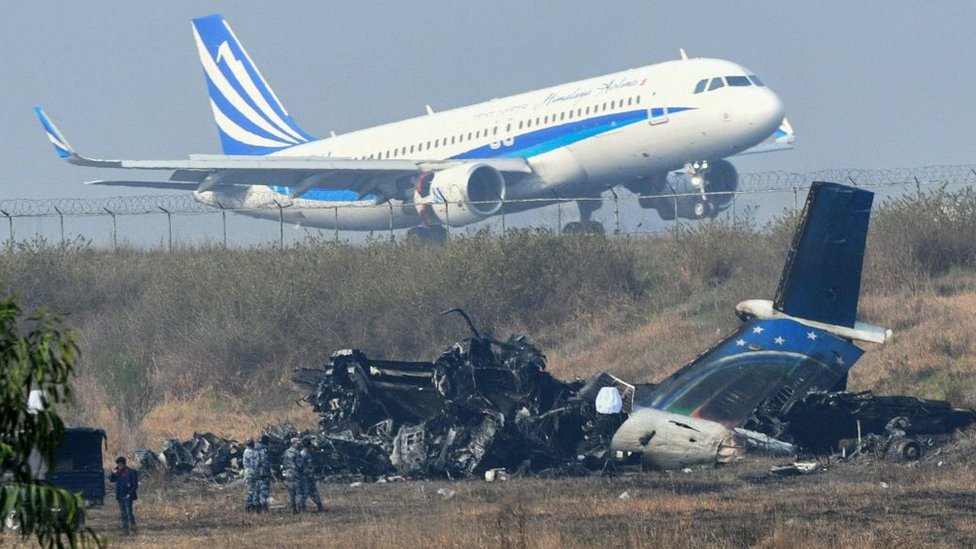INSUBCONTINENT EXCLUSIVE:
Image copyrightGetty ImagesImage caption
The plane caught fire after making a dangerous landing attempt in Kathmandu
last March
The pilot of a plane that crashed in Nepal last March "seemed to have an emotional breakdown", according to a
final report into the disaster.The flight carrying 71 people from Dhaka in Bangladesh caught fire as it landed in Kathmandu, killing 51
people.It was initially thought that poor communication with air traffic control may have been to blame.But investigators now say the pilot
was ranting to crew members and even smoking in the cockpit, due to stress
Nepal's Accident Investigation Commission said in its report that the captain of US-Bangla Airlines flight BS211 was "very much
emotionally disturbed and stressed" because a female colleague, who was not on board the plane, had "questioned his reputation" as a good
flight instructor.The 52-year-old pilot was released from the Bangladeshi Air Force in 1993 because of depression, the report says, but was
later declared fit to fly civilian aircraft.Recent medical reports had not mentioned any symptoms.Image copyrightGetty ImagesImage caption
Of the 71 passengers and crew members on board, 51 died
Investigators say the pilot's vocal pitch, and
the language he was using "indicated that he was agitated and experiencing high levels of stress" even when speaking to ground control in
Dhaka before take-off.According to the black box voice recorder and reports from surviving passengers, the pilot smoked in the cockpit and
"engaged in unnecessary, unprofessional and lengthy conversation even in the critical phase" of the flight
"This state of mind with high degree of stress and emotional state might have led him to all the procedural lapses," the report says
"This, together with the failure on the part of both the crew to follow the standard operating procedure at the critical stage of the
flight, contributed to the loss of situational awareness."It adds that the 25-year-old first officer may have been reluctant to be more
assertive during the final approach and landing because of the captain's experience and authority.Because they had lost "situational
awareness", the crew failed to realise the flight had deviated from its intended path until it was too late
They missed the runway at Kathmandu's Tribhuvan International Airport, and ended up flying in an incorrect position in the dangerous
mountainous terrain.Image copyrightGetty ImagesImage caption
After the crash, vigils were held in Dhaka for those who
died
"Finally, when the crew sighted the runway, they were very low and too close to [it] and not properly aligned," the
report says, adding that the landing attempt should have been aborted.Instead the pilot "forced it to land while in a turn"
The plane quickly skidded off the runway and through a fence, rolling down a slope into a grassy field where it was engulfed in flames.Soon
after the crash, 29-year-old survivor Sharin Ahmed told TheIndianSubcontinent Nepali that "there was a huge fire outside and smoke gushed
into our cabin", followed by an "explosion".Both pilots, the two cabin crew and 47 passengers died as a result of the accident
The crash was the worst aviation disaster to hit Nepal in 26 years.The report recommended that US-Bangla should actively monitor and assess
its pilots' mental health, as well as any professional or personal issues they may be facing.

